9.2 /10 1 Votes
91% Metacritic Director(s) Tsuyoshi Kobayashi Composer(s) Kanako Kakino Mode(s) Single-player | 4.8/5 Emuparadise 9.2/10 IGN Artist(s) Yoshihiko Arawi Genre(s) Platform Initial release date 21 March 2001 | |||||||||||||||||||||||||||||||||
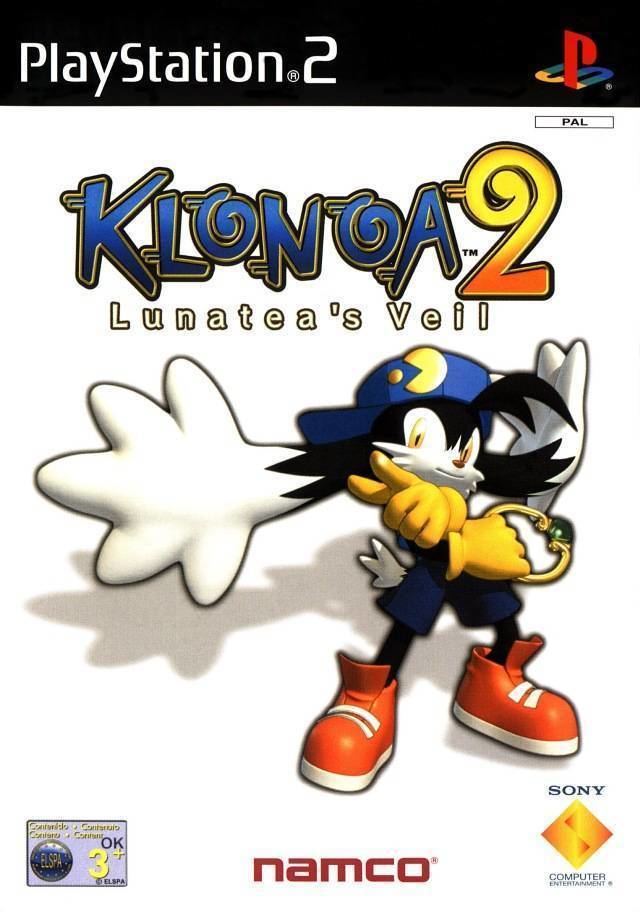 | ||||||||||||||||||||||||||||||||||
Producer(s) Shigeru YokoyamaMasaya Nakamura Similar Klonoa games, Namco games, Platform games | ||||||||||||||||||||||||||||||||||
Cgr undertow klonoa 2 lunatea s veil for playstation 2 video game review
Klonoa 2: Lunatea's Veil, known in Japan as Kaze no Klonoa 2: Sekai ga Nozonda Wasuremono (風のクロノア2 世界が望んだ忘れもの, lit. "Klonoa of the Wind 2: The Thing That The World Wants to Forget") is a platform game developed by Namco and published by Namco and Sony Computer Entertainment Europe for the PlayStation 2 in 2001. It is the direct sequel to 1997's Klonoa: Door to Phantomile.
Contents
- Cgr undertow klonoa 2 lunatea s veil for playstation 2 video game review
- Gameplay
- Setting
- Story
- Characters
- Development and release
- Reviews
- Accolades
- References
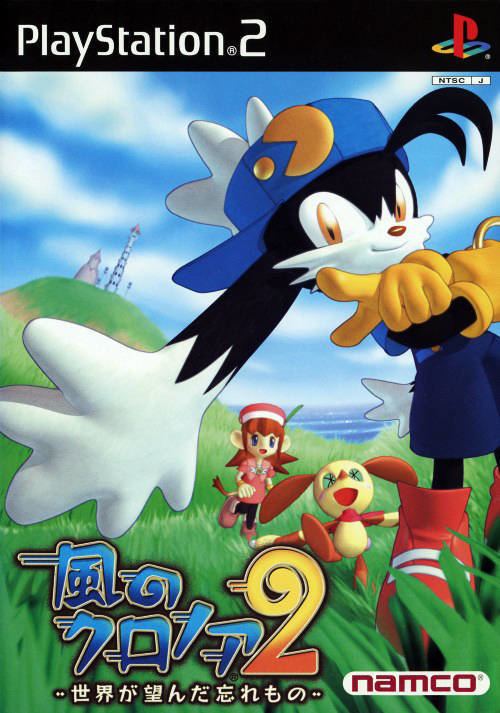
The game puts players in the role of Klonoa, who, along with a new cast of friends, has stumbled into another adventure, this time to save the world of Lunatea and help unveil the mysteries of the enchanted world. The game features gameplay inspired by the original Klonoa with 2D side-scrolling in a 3D-rendered environment. Klonoa's equipped weapon is a crystal ring which contains the life of Lolo inside helping him.
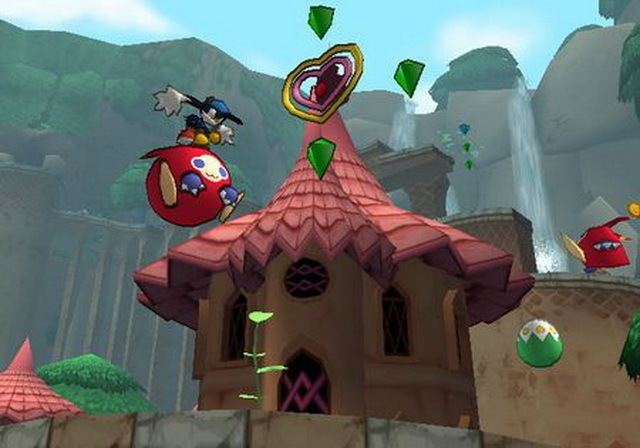
Gameplay
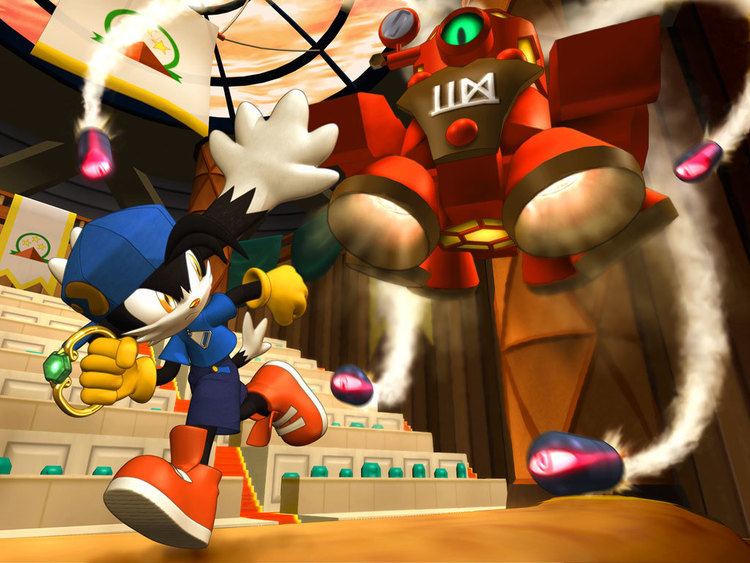
The gameplay of Klonoa 2: Lunatea's Veil is comparable to its predecessor Klonoa: Door to Phantomile, consisting of standard platforming stages and boss battles, as well as board-riding stages. After a specific point in the game, the player has the option of choosing which stage, or "Vision", to play on the game's world map. For most of the game, the player is restricted to a side-scrolling 2D path in a 3D environment, with the ability to move left, right, up, or down. The player can also turn toward or away from the screen to interact with or throw things at objects in the foreground or background. In the standard stages the goal is to reach the end of level by means of using the enemies to overcome obstacles and solve puzzles. Klonoa has a limited amount of health in the form of hearts, which is reduced when coming in contact with enemies and certain obstacles.
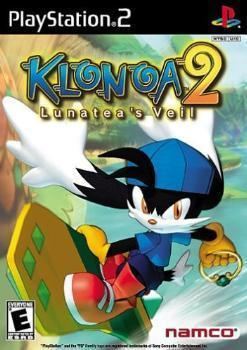
In addition to being able to jump, Klonoa can shoot enemies with his signature "Wind Bullet" using the ring he carries. Once Klonoa has shot an enemy with a Wind Bullet, the player can throw it or use it to double jump by tossing the enemy towards the ground after jumping. There are also special kinds of enemies that are required for progressing through each Vision. These include the enemies called "Boomies," which will explode after a certain amount of time and must be used to break certain barricades; "Likuries," which absorb the enemies they are thrown at, resulting in them changing color from which point the player can use them to break crystals of the matching color; "Erbils" that give Klonoa the ability to jump higher than normal; and "Kitons," enemies the player can use to fly for a short time. There are also jet-like enemies and large cannons that rocket Klonoa towards distant parts of a Vision. Additionally, there is a feature that lets a friend use a second controller to make the character Popka give Klonoa an extra boost while jumping. Other than that, however, there is no multiplayer mode in this game. Board-riding stages put Klonoa on a fixed, continuously-moving path towards the end goal. Boss battles normally consists of grabbing enemies or objects to throw at the boss until its health depletes.
In each Vision, there are a number of items for Klonoa to collect. For example, Hearts will refill Klonoa's health and Alarm Clocks serve as a checkpoint in the event the player dies. Each Vision, aside from boss battles, contains at least 150 "Dream Stones" scattered around. The item called the "Mirror Spirit" temporarily makes each stone worth double its original value. Every Vision also contains six star-like items called "Moon Stones." Collecting 150 Dream Stones for a Vision will unlock a picture in the game's "Scrapbook," while collecting six Moon Stones earns the player a "Momett Doll," used to unlock other in-game features.
Setting
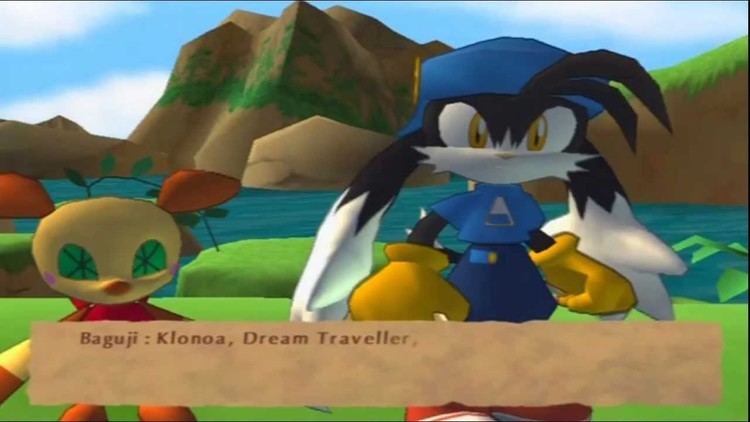
The game takes place in the dream world of Lunatea. It is composed of four kingdoms. The Kingdom of Tranquility, La-Lakoosha, is a peaceful kingdom that lies at the north of Lunatea and where the High Priestess resides. The Kingdom of Joy, Joilant, is a kingdom to the south of Lunatea and resembles an amusement park. The Kingdom of Discord, Volk, which lies to the west, resembles several metalworking factories and its people wage a neverending war. The Kingdom of Indecision, Mira-Mira, is secluded and snowbound all year long. Each kingdom contains a bell housing its element.
Story
The game opens with Klonoa during what appears to be a dream. A mysterious figure calls out for his help. Suddenly, he is seemingly teleported to Lunatea and falls into an ocean. The tide sweeps him towards a rocky outcrop, where he is spotted and rescued by Lolo and Popka. The two direct him towards an island which houses a bell, which Lolo must ring to become a full priestess. With Klonoa's help, the group make their way to the bell and Lolo, much to her excitement, manages to ring it.
Lolo and Popka take Klonoa to visit Baguji, an enigmatic but wise prophet. He explains that the four Kingdoms of Lunatea each house a bell, which maintain harmony throughout Lunatea. However, a fifth bell which does not belong to any of the kingdoms has appeared. This fifth bell has begun to spread chaos across Lunatea, spawning monsters and causing priestesses to fall ill. Despite this, no one in Lunatea seems to notice. He then instructs them to visit the High Priestess. Upon reaching the High Priestess, Lolo is officially designated as a full priestess. The High Priestess orders Lolo to visit and gather the power from each bell in order to contain the evil. The three then set off to visit each bell.
During their journey, the group is often stalked and attacked by Leorina and Tat, who desire the power of the bells for their own purposes.
Characters
The protagonist of the game is the anthropomorphic cabbit Klonoa, known by the people of Lunatea as the "Dream Traveler," one who is summoned to save unbalanced dream worlds. Throughout most of the game, he is accompanied by Lolo, a priestess in training. She has continuously failed the test to become a full-fledged priestess, but is asked by the High Priestess of the Goddess Claire to aid Klonoa in his journey to save Lunatea. In the game, she provides the energy of Klonoa's ring. Klonoa is also joined by the dog-like creature Popka, who acts as the rude but charismatic sidekick of Lolo. Early in the game, the trio seek the aid of the enigmatic prophet, Baguji, who apparently predicted Klonoa's arrival and directs the team throughout the early parts of their journey.
The game's primary antagonist is the pirate Leorina, a former priestess who eventually lost her patience and set off to gain "The power of the gods." She is accompanied by Tat, a floating cat-like creature who has the power to split herself into two beings. She shows a liking to Klonoa at the beginning of the game, giving off a few tips to Klonoa when he is pursuing her.
Development and release
A port for the Nintendo Gamecube was announced, but cancelled prior to release. It was stated by Hideo Yoshizawa, the executive producer and director of the Klonoa series, that if the Wii release of Klonoa: Door to Phantomile was received well, he would likely make a Wii version of Lunatea's Veil too.
The soundtrack for Klonoa 2: Lunatea's Veil was composed by eight individuals. A two-disc, 73 track set was released exclusively in Japan by Scitron Digital Content on August 21, 2002. The score includes the vocal song "Stepping Wind," sung by Klonoa voice actress Kumiko Watanabe in the character's fictional in-game language. Despite this, the guidebook released by Enterbrain contains a Japanese translation for the lyrics.
In Japan, Enterbrain released an official strategy guide to Klonoa 2: Lunatea's Veil in 2001. Another guide was released by BradyGames in North America. Yujin released a 4-inch tall gashapon figure of Lolo and Popka as part of the "Namco Girls" Mini-Figures Series 5 collection.
Reviews
Klonoa 2: Lunatea's Veil was well-received from most game critics. At Metacritic, which assigns a normalized rating out of 100 to reviews from mainstream critics, the video game received an average score of 91, based on 18 reviews, which indicates "universal acclaim".
GamePro gave it an acclaimed review, awarding it five out of five, saying "A prime lesson on simple yet addictive gameplay with awe-inspiring visuals-a blend that no gamer should miss." Benjamin Galway from GameSpy gave the game a positive review, saying "While the story isn't quite as moving as the original, Klonoa 2 has a wonderful mix of action, great control, nice challenge [...], and just beautiful presentation." IGN's David Smith gave the game a positive review, saying "With the aid of PS2 graphics, not only is Klonoa the star of a superior platformer, he's the star of one of the most beautiful games available." GameZone too gave it a positive review, saying that this game is a certain game that would make you "smile." GameSpot gave it a positive review, saying "Because of its airtight gameplay, awesome visuals, and great soundtrack, Klonoa 2 is an almost perfect platform game [...] almost."
Although the game was well-received from many game critics, the commercial success lacked. Klonoa 2: Lunatea's Veil sold 133,401 copies in Japan during 2001, making it the 85th best-selling game of the year. Famitsu reported that the game sold 33,785 copies during its first week of release in that region. Klonoa 2, along with Moto GP 4 and Seven: Molmorth no Kiheitai, were expected to sell a combined 900,000 copies during the release quarter, but only managed to sell 290,000 units together. Lunatea's Veil was re-released in Japan on June 27, 2002 as part of Sony's The Best range of budget titles.
Accolades
Klonoa 2: Lunatea's Veil won GameSpy's PlayStation 2 "Platform Game of the Year" in 2004 and was later named the 20th best PlayStation 2 game by the website. Gaming Age also named it the best platformer in its "Best of 2001 Awards". The game was nominated for Best Platformer in GameSpot's "Best and Worst of 2004". It was called the tenth best PlayStation 2 game for the system's first year by IGN. In 2004, staff of IGN also included it as "one of twelve games you've probably never played, but should."
